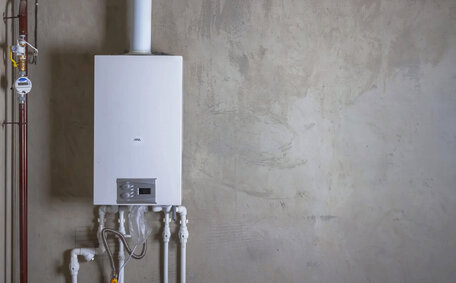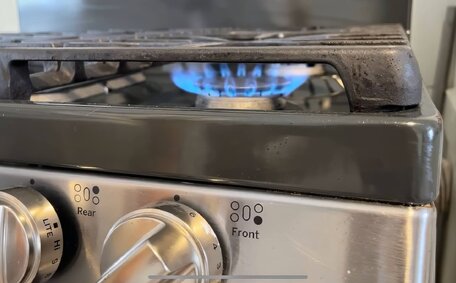Introduction to Preparing Your Hot Water System for Winter
As winter looms, preparing your hot water system is crucial to maintain efficiency and avert potential damage, including burst pipes, which can inflate energy costs and disrupt service.
Adjusting your heater’s temperature, insulating pipes and valves, flushing sediment, and checking components such as the pressure relief valve and anode rod are critical steps. Additionally, upgrading to tankless or solar water heaters can enhance efficiency.
This article delineates key steps to winter-proof your hot water system, optimising performance, extending its lifespan, and guaranteeing a steady flow of hot water for showers and appliances throughout the colder months.
Understanding Your System’s Winter Needs
Your hot water system strains more in the colder months, expending extra energy to heat chillier incoming water. In Sydney’s winter, a well-functioning water heater is crucial to cope with the lower temperatures.
Routine examinations of your water heater’s plumbing and electrical parts are vital for winter, ensuring efficiency and durability. Inspections like checking the anode rod, flood stop valves, and sediment drainage, along with insulating pipes, prepare your system for consistent running in colder temperatures. Consider tankless heaters or solar panel integrations for added energy savings.
This article outlines winter-ready steps to help optimise your existing system. Following our tips on adjusting temperature, flushing sediment, and inspecting components can minimise wear on your winter water heater functioning while supplying consistent hot water for showers, appliances and more all season long.
Optimize Temperature for Efficiency
Adjust your hot water system’s thermostat to between 50-60°C for peak winter efficiency. This strikes a balance between providing hot water for showers and appliances while reducing wasteful energy consumption.
A thermostat setting below 50°C can result in lukewarm water, while exceeding 60°C may raise scalding risks and squander energy without notable advantages.
Achieving the right temperature balance ensures your gas hot water system operates efficiently. Gas and electric hot water models may have slightly different ideal temperatures - check manufacturer guidelines. We’re eager to help with your temperature set points, ensuring your water heater is tweaked for optimal winter performance based on your needs.
Fine-tuning your heater’s winter temperature is one of the simplest ways to boost efficiency. Combining this with other winterizing steps your heater should undergo, like insulation, anode checks and flushing sediment, keeps your system running reliably all winter long while controlling energy bills.
Importance of Insulation
Insulating your hot water unit, both the tank and pipes, is essential for winter efficiency and damage prevention, reducing heat loss and safeguarding against sub-zero temperatures that can result in leaks or burst pipes.
Consider a purpose-made insulation blanket for your hot water tank to retain heat and maintain warm water longer, coupled with foam tubing on pipes and valves for efficient and straightforward installation.
Effective insulation can reduce heat loss by up to 75%, maintaining hot water for longer periods and reducing energy costs. This conserves water your energy within the system heating, rather than being squandered warming your roof space. The payoff is lower energy bills and reliable hot water flow even on cold winter mornings.
During inspections, we verify that your tank and pipes are adequately insulated. Installing or upgrading insulation is one of the most cost-effective ways to optimise winter performance. Coupled with other maintenance tasks, insulation supports your system’s winterization to prevent freezing damage and optimize efficiency.
Flush Sediment Buildup
Sediment accumulation in your tank over time diminishes efficiency. Flushing it out enhances performance and extends your system’s lifespan.
Turn off the power, allow the tank to cool, attach a hose to the drain valve, lift the pressure relief valve lever to let air in, and then open the drain valve to release sediment-laden water until it becomes clear.
Flushing out a few gallons can take care of removing the most common types of sediment. Dispose of the drain water away from plants or grass due to mineral content. Finish by closing valves and refilling the tank before restoring power.
Annual flushing is recommended to eliminate scale deposits, ensuring peak system efficiency during winter. Our technicians can help with your water heater winter maintenance, including flushing your system and checking anode rods or other components.
Check and Replace Sacrificial Anodes
Sacrificial anodes play a vital role in protecting your hot water system tank from corrosion damage. Made from materials like magnesium or aluminium, the anode rod actively corrodes over time, which prevents the steel inside tank itself from rusting.
It’s critical to check and replace your anode rod every three to five years to extend your water heater’s life. Over time the anode will erode, indicated by a significant reduction in diameter or uneven pitting on the surface.
A plumber can replace worn anodes as a straightforward way to prolong the life of your system.
Make sure power is off and the tank is cool before opening the access panel. Unscrew the anode rod assembly and insert a new one of the correct shape and length. Apply approved thread sealant and tighten firmly before closing up and restoring power.
Scheduling sacrificial anode checks with annual flushing lets us inspect and replace them if needed, along with other tasks to keep your hot water flowing reliably. Proactively maintaining this crucial component enhances safety and longevity, preventing leaks and ensuring optimal heating efficiency.
Maintain Pressure Release Valves
Checking that your TPR valve is working properly is a critical safety measure before winter. These temperature pressure valves can help as an emergency release for dangerous buildup inside the tank, preventing explosion risks.
To test the valve on your heater’s winter safety mechanism, you can turn the lever and check that water flows out as expected. Ensure the valve closes watertight when released. have a bucket ready to catch any release, ensuring there no water is wasted, and don’t hesitate to give us a buzz if you encounter any problems.
If there’s no water coming out of your water tank despite the lever being raised, or the valve fails to reseal, Give us a call for professional replacement.
Temperature valves warrant an annual inspection as well. Improper temperatures can waste energy or pose scalding dangers. If you’re not sure how to test or replace these components, reach out for help to keep your system operating safely and efficiently through winter.
Consider Upgrading Your System
If your hot water system is over 10 years old or you’ve noticed declining performance and efficiency, winter is an opportune time to consider upgrading. Signs like frequent breakdowns, rust, sediment buildup or spikes in energy bills indicate your system may be due for replacement.
Contemporary heaters, such as tankless systems, offer greater efficiency and a longer lifespan than older models. Tankless systems heat water on demand rather than maintaining a standing supply, which cuts energy waste. Solar hot water systems can significantly cut winter gas bills by utilising renewable energy.
They last over 20 years with minimal maintenance.
Upgrading before winter means your unit can benefit from improved efficiency and reliability all season long. Give us call and our experts can advise if your water heater needs upgrading and the most suitable replacement options. Investing in a new energy-efficient model at your local supplier pays dividends through winter and beyond with lower bills and fewer issues.
Seek Professional Maintenance
Professional maintenance by a plumber, such as those at Glenhaven Plumbing, is crucial for preparing your hot water system for winter, as DIY can be hazardous given the system’s complexity and high pressure.
Our skilled, insured technicians can winterize and service your hot water heater, adjusting temperature settings, flushing sediment, inspecting anode rods, valves, insulation, and pipes for optimal weatherproofing, among other services.
Upgrading ageing or inefficient models is also our specialty - we advise on the most suitable energy-efficient systems with minimal disruption to your water heater tank at home. Investing in a modern water heater benefits your home through reduced energy bills and increased reliability.
Contact Glenhaven Plumbing today via email at [email protected] or phone 1300 349 338 to schedule comprehensive maintenance before winter. Our preventative servicing optimises hot water supply, safety and efficiency all season long.





